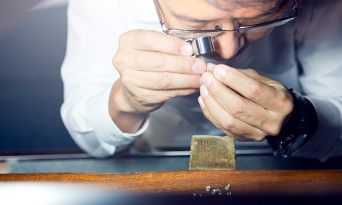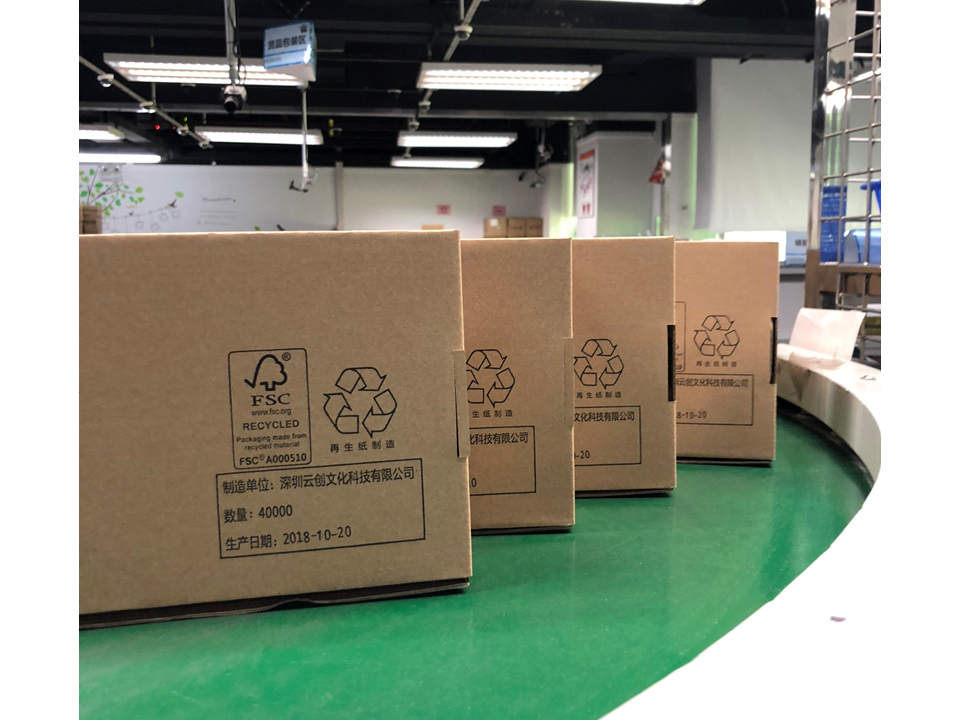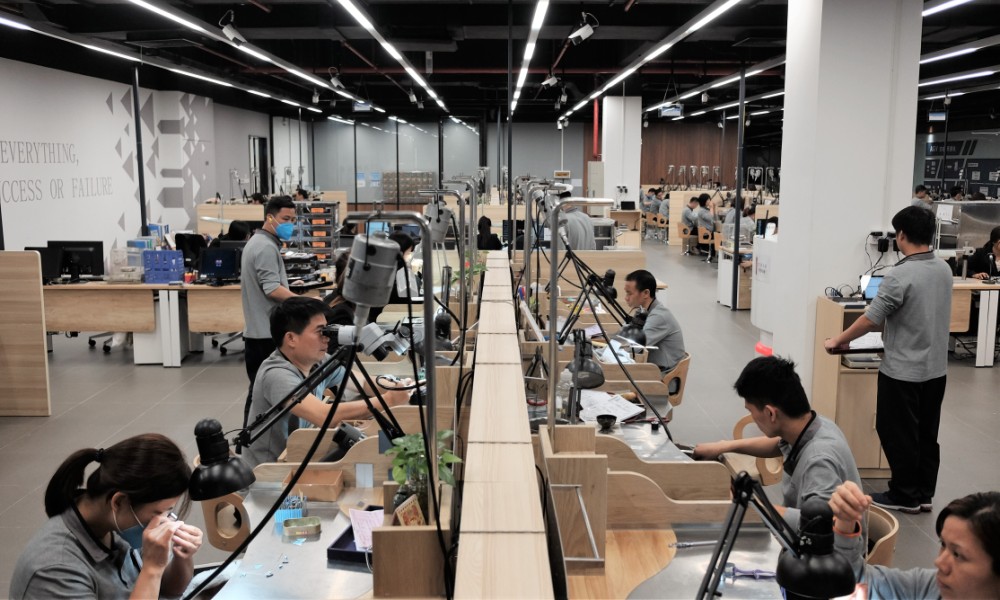ENVIRONMENTAL STEWARDSHIP
Our Environmental Protection Policy guides us in managing the consumption of resources and reducing the environmental impact stemming from our daily operations.
FEATURE STORY

Chow Tai Fook Jewellery has been partnering with a leading gold refining plant in China since 2022 to refine recycled gold by harnessing advanced automation technology. The major sources of gold for refining come from our value chain, including trade-ins from customers and scrap gold from production hubs. Refined gold is delivered to our production hubs for manufacturing and processing, enabling a closed-loop system: a form of circularity. At present, our annual gold refining capacity is 35 tonnes, equivalent to a reduction of about 1,000 tonnes of CO2e GHG emissions.
To further contribute to carbon reduction, the plant uses energy-efficient appliances, including inverter air-conditioners, fans and furnace systems with temperature control.
Our production hubs consume water for cleaning, diluting, cooling and other purposes. We aim to build a comprehensive greywater treatment system to recycle, treat and reuse the wastewater collected there, acknowledging the paramount importance of preserving precious water resources.
In Shunde, we launched the first phase of the system in March 2023. It treats greywater in two buildings, with a target of 90% reuse. After an initial few months of testing and implementation, the target has been met since July 2023. We are proud of this achievement and plan to expand on it: we are currently exploring new water reuse points and evaluating the feasibility of expanding the system to other buildings, with an ultimate goal of introducing it to all production hubs.
- Amount of water withdrawal saved in FY2024: 15,000+m3
- Average monthly reuse rate in FY2024: 90%
*Compared to FY2019
We take a focused approach in combating climate change by reducing greenhouse gas (“GHG”) emissions through energy conservation initiatives at our production hubs and Point of Sales (“POS”), as most of our GHG emissions come from electricity consumption at our production hubs and POS.
- Adopt natural lighting where possible, while LED light bulbs and energy-efficient T5 fluorescent tubes are used to reduce electricity consumption
- Maintain air-conditioning systems at around 25°C to conserve energy
- Use various environmentally responsible materials to reduce heat transmission and, as a result, greatly reduce air-conditioning demand
- Install our production machines with timers so that machines switch off automatically or switch to low-speed mode when not in use
- Install LED or compact fluorescent bulbs to conserve electricity
- Participate in the Charter on External Lighting advocated by the Environmental Protection Bureau of the Government of the HKSAR
Our air emissions are mainly generated from our jewellery production process, which primarily comprises moulding, ultrasonic cleaning and hard gold electroforming. Air emissions generated include NOx, SOx, VOCs, dust and acidic gases.
- Numerous measures are in place to minimise air emissions at different stages of production
- Conduct air sample tests on poisonous gas levels
- Install real-time monitoring system in our production hub in Wuhan
Our jewellery production processes involve the consumption of water for moulding, hard gold electroforming, and gold plating. The production process requires the use of chemical substances containing slight traces of heavy metals and gypsum, which results in the production of acidic, alkaline, and gypsum wastewater discharges.
- Prioritise water recycling and reuse in our production lines whenever possible
- Pretreat wastewater prior to discharge in compliance with relevant regulations
- Engage professional operators to collect, treat, and dispose of liquid chemical waste
- Store all hazardous waste in secured containers within well-ventilated hazardous waste storage areas for less than one year
- Engage licensed contractors to ensure proper treatment and disposal of hazardous waste, and to collect and dispose of unrecyclable paper, food waste, and other daily consumables
- Provide bins and trays in offices to collect recyclable materials
- Publish internal communications on digital channels to reduce paper consumption
















